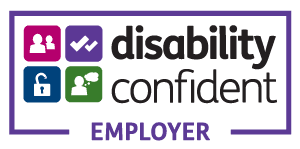Hiring qualified veterinary professionals is not just about selecting skilled candidates; it’s about building a legally compliant, patient-safe, and professionally credible team. Whether you manage a local clinic or operate across multiple states, adhering to staffing regulations protects your practice from legal, financial, and reputational risks.
This guide equips veterinary employers with practical insights into the hiring process while meeting state-specific licensing requirements and federal standards. From credentialing to background screening and onboarding, every step is essential to ensuring staff eligibility and workplace compliance.
Credentialing Requirements for Veterinary Staff
Veterinary employers must confirm that each applicant holds the necessary qualifications and certifications. These requirements vary by state and by role and are essential for all types of employment—permanent, locum, contract, or per diem.
Veterinarians (DVMs)
- Must have graduated from an AVMA-accredited veterinary program (DVM or VMD)
- Passed the NAVLE
- Holds an active state veterinary license
- Completes continuing education (CE) for license renewal
Veterinary Technicians and Technologists
- Must have an AVMA-accredited degree: Associate (technician) or Bachelor’s (technologist)
- Passed the VTNE
- Credentialed as LVT, RVT, or CVT, depending on the state
- Maintains CE compliance per state law
Veterinary Assistants
- Licensure not required
- Optional certification: NAVTA’s Approved Veterinary Assistant (AVA)
- Employers should verify education, training, or prior work history where relevant.
Employers must document license numbers, credentialing status, expiration dates, and registry affiliations to ensure ongoing eligibility.
The Pre-Employment Background Check Process
A robust background check process is vital to responsible and compliant hiring. Employers must complete background reports before onboarding any staff member.
Key Checks Employers Must Conduct:
- Criminal Background Check: Identify felony convictions, financial misconduct, or offenses involving controlled substances. Screening must be job-related and consistent with state law.
- License and Credential Verification: Confirm professional credentials such as NAVLE, VTNE, or AVA and verify active licensure through the appropriate state registry.
- Employment and Education Verification: Validate experience with past employers and degrees from accredited institutions.
- Reference and Conduct Checks: Gain insight into work history, conduct, and suitability through feedback from former supervisors.
- Drug Screening: Essential for roles involving anesthesia, prescribing, or medication handling. This supports patient safety and workplace reliability.
- Sanctions and Registry Checks: Screen against OIG exclusions, the sex offender registry, and other healthcare sanction databases. Individuals barred from practice must not be hired.
These background checks help reduce malpractice risk, prevent negligent hiring, and ensure compliance across job functions.
Navigating State Licensing and Regulatory Requirements
Licensing and regulation in veterinary practice vary from state to state. Employers, particularly those hiring mobile, locum, or multi-state staff, must verify local compliance to avoid costly penalties.
Key employer responsibilities include
- Verifying valid state-issued veterinary licenses
- Confirming DEA registration when required
- Ensuring continuing education completion by state rules
- Complying with state-specific laws related to controlled substances, patient records, and clinical protocols
For example, California mandates 36 CE hours every two years for veterinarians, while Texas requires 17 hours annually. Documentation of state-by-state licensing ensures that staff are legally permitted to practice in their assigned locations.

Internal Compliance Policies and Record Keeping
Compliance doesn’t stop at hiring. Employers must implement policies that ensure documentation is securely stored, easily accessible for audits, and kept following legal retention timelines.
Records of background checks and drug screenings should be retained for at least six months (or longer, depending on local laws). Proof of license, credential verification, and completed onboarding checklists should be maintained in secure personnel files.
Developing a compliant onboarding protocol also reinforces accountability. This includes verifying that new staff have signed necessary policy acknowledgements, completed training, and submitted all credentialing documents before beginning work. Maintaining organized, retrievable files can make the difference between a successful inspection and a costly citation.
Additional Documents Employers Must Not Overlook
To ensure complete staffing compliance, veterinary employers must also collect and maintain the following documentation:
- Signed employment contracts or locum agreements
- HIPAA and data protection training acknowledgements
- Immunization records, including rabies vaccination (where required)
- Job descriptions with signed employee acknowledgements
- Work eligibility and visa documentation (for non-citizens)
- OSHA safety training certificates (if applicable)
Collecting and retaining these documents helps verify job-related qualifications, ensure workplace safety, and demonstrate regulatory compliance.
Legal and Financial Risks of Non-Compliance
Neglecting staffing compliance can lead to severe consequences, including
- Unlicensed staff: May result in malpractice claims or disciplinary action.
- Unverified DEA registration: DEA violations can incur fines exceeding $15,000 per incident.
- Inadequate background checks: Employers may face liability for criminal conduct or violence committed by improperly screened staff.
- Poor documentation: Missing files can result in failed audits or revoked licenses.
- Reputational harm: Clients may lose trust in your services, reducing patient volume and increasing insurance costs.
Employers must tailor their screening process to each role, document every step, and stay updated with evolving state and federal guidelines to remain compliant.
Verovian’s End-to-End Compliance Support for Veterinary Hiring
At Verovian Veterinary Recruitment Agency, we understand the complexity and critical nature of staffing compliance in the veterinary healthcare sector. We don’t just help you hire; we ensure that every candidate we place is fully vetted, credentialed, and ready for work.
When you partner with Verovian:
- Every applicant undergoes a structured, job-related background check process, including license and credential verification, criminal history review, and drug screening.
- All required documentation verified, from employment eligibility and education to CE completion and DEA registration
- You receive only fully compliant professionals, whether you are hiring for permanent, contract, per diem, or locum tenens roles.
- An updated team with knowledge of evolving state regulations tailors our approach to your location-specific needs
Conclusion
Veterinary staffing compliance is not optional; it’s a critical element of responsible business operations. From verifying credentials and navigating licensing laws to conducting proper background checks, employers must adopt best practices that ensure both legal adherence and patient safety. A structured, thorough hiring process minimizes risk, builds client trust, and supports long-term operational success.
Protect your practice. Hire with peace of mind. Contact us for trusted, compliant staffing support.





